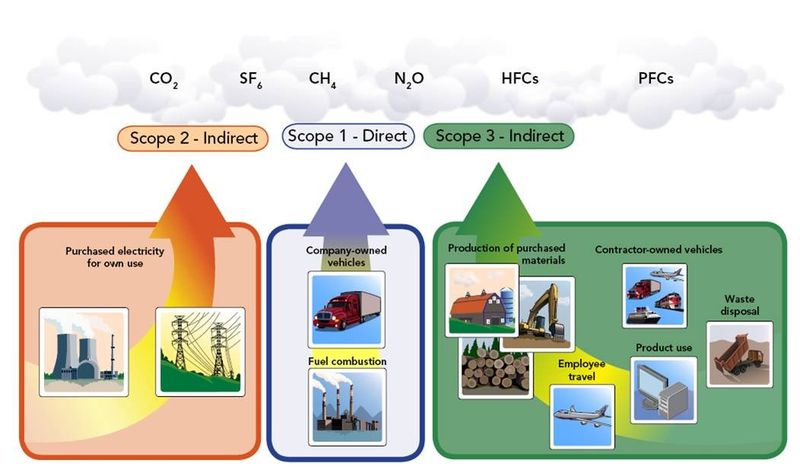Carbon footprint assessment is not an easy task. Before being a regulatory reporting document, the Bilan Carbone remains before all a process. Indeed, it encompasses both a fairly accurate Greenhouse gas emissions assessment but also a plan to reduce those emissions. It also assesses the impact of a carbon tax or an increase in hydrocarbons and their derivatives on the company.
In general, a Bilan Carbone® is considered to be structured around 6 main stages.
Stage 1: Awareness of Climate-Energy issues
During this phase, the Bilan Carbone® approach is presented to the principal stakeholders of the entity. The issues of climate change and the possible impacts on the studied structure are discussed. In general, it is at the end of this stage that a person is designated as the entry point for the Greenhouse gases assessment in the structure.
Step 2: Definition of the Bilan Carbone® scope
A mapping of all the flows in the company is established in order to define comprehensively the set of activities and sub-activities generating greenhouse gases. The identification of key resource persons and an initial assessment of the accessibility of the data are established. On this basis, a final framework is established for the project with appropriate arbitrations in terms of scope (sites, processes, etc.)
Step 3: Collection and processing of data
This step involves internal resources to the structure, holding relevant information to carry out the Carbon footprint assessment, as well as third-party resources (suppliers, partners, etc.) that may need to be involved. The contractor – which has to be licensed by the public body ADEME-ABC – then processes all the data according to the methodologies and tools validated by the authorities. It carries out all calculations and valuations of greenhouse gas emissions.
Step 4: Exploiting Results
It is a question of presenting in detail the emissions of greenhouse gases evaluated for all the activities of the structure, to zoom in on the most emitting stations or sub-entities and processes. Economic simulations can also be put in place to assess the structure’s exposure to possible carbon taxes and to the direct and indirect impacts of fluctuating hydrocarbon prices.
Step 5: Establishment of the action plan
A reduction plan is prepared to prepare for emissions reduction in the short, medium, and long term. Financial evaluations can accompany this step which plays a structuring role in the setup of a proper carbon management strategy. Ideally, a leader for the entire improvement plan is designated at this stage within the structure.
Step 6: Launch of the action plan
This is the handover phase between the contractor and the company. It is generally recommended to carry out an internal communication plan during this stage to sensitize the employees of the structure both to the results of the assessment and also to the action plans implemented. It is generally the best time to start to follow in a structured way a set of key indicators related to smart actions dedicated to the emissions improvement project. These “Bilan Carbone®” indicators ideally become indicators of the manager’s scorecard.
Additional useful resources to support your carbon footprint assessment: Greenhouse Gas Protocol, Carbon Trust
This short article is only an introduction to the subject. To get an in-depth analysis of this topic or adjacent topics, get in touch and check the list of services that we can provide. You can also read more about GHG Emissions here.

